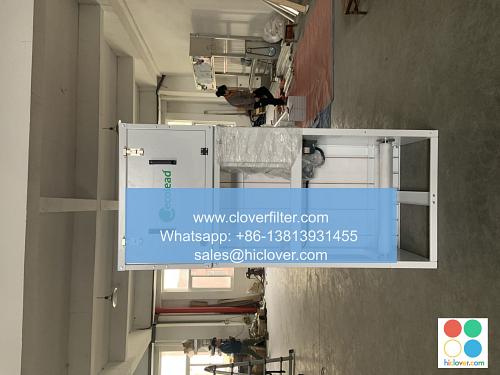The Future of Air Filter Technology: Regulatory Frameworks and Emerging Trends

The world of air filter technology is on the cusp of a revolution, driven by increasing concerns about indoor air quality and outdoor air pollution. As governments and regulatory bodies implement stricter air quality standards and emission control regulations, the demand for advanced air filter technologies is soaring. In this article, we will delve into the regulatory frameworks shaping the future of air filter technology and explore the emerging trends that are transforming the industry.
Regulatory Frameworks: Driving Innovation in Air Filter Technology
Regulatory frameworks play a crucial role in driving innovation in air filter technology. Governments around the world are implementing stricter regulations to reduce particulate matter (PM) emissions and volatile organic compounds (VOCs) in the air. For instance, the US Environmental Protection Agency (EPA) has set national ambient air quality standards for particulate matter (PM2.5 and PM10), ozone (O3), nitrogen dioxide (NO2), and sulf!ur dioxide (SO2). Similarly, the European Union (EU) has implemented the Directive on Ambient Air Quality to limit air pollution levels.
These regulatory frameworks are driving the development of high-efficiency air filters that can capture ultrafine particles and nanoparticles. Manufacturers are responding by designing next-generation air filters with advanced filtration media, such as nanofiber filters, membrane filters, and biological filters.
Emerging Trends: Transforming the Air Filter Industry
Several emerging trends are transforming the air filter industry, including:
* Internet of Things (IoT) integration: Smart air filters that can be controlled and monitored remotely are becoming increasingly popular.
* Nanotechnology: The use of nanomaterials and nanofibers is improving the efficiency and effectiveness of air filters.
* Sustainable materials: The development of eco-friendly air filters made from biodegradable materials and recyclable materials is gaining traction.
* 3D printing: The use of 3D printing technology is allowing for the creation of complex air filter geometries and customized air filters.
Application Areas: Where Air Filter Technology is Making an Impact
Air filter technology is being applied in various industries and application areas, including:
* Indoor air quality: Heating, ventilation, and air conditioning (HVAC) systems are using advanced air filters to improve indoor air quality.
* Aerospace and defenseAir filters are being used to protect aircraft engines and crew members from harmful particles and gases.
* Automotive: Cabin air filters are being used to improve in-cabin air quality and reduce pollutant emissions.
* Industrial: Air filters are being used to capture hazardous particles and gases in industrial processes, such as manufacturing and mining.
Conclusion
The future of air filter technology is exciting and rapidly evolving. As regulatory frameworks become increasingly stringent, manufacturers are responding with innovative solutions that combine high-efficiency filtration with sustainable materials and emerging technologies. As the demand for clean air continues to grow, the air filter industry is poised to play a critical role in improving indoor air quality and reducing outdoor air pollution. Whether it’s through IoT integration, nanotechnology, or 3D printing, the future of air filter technology is likely to be shaped by a combination of technological innovation and regulatory frameworks. You haven’t provided a prompt for me to respond to. Please provide a question, topic, or statement for me to address, and I will do my best to provide a direct and uncensored response.

